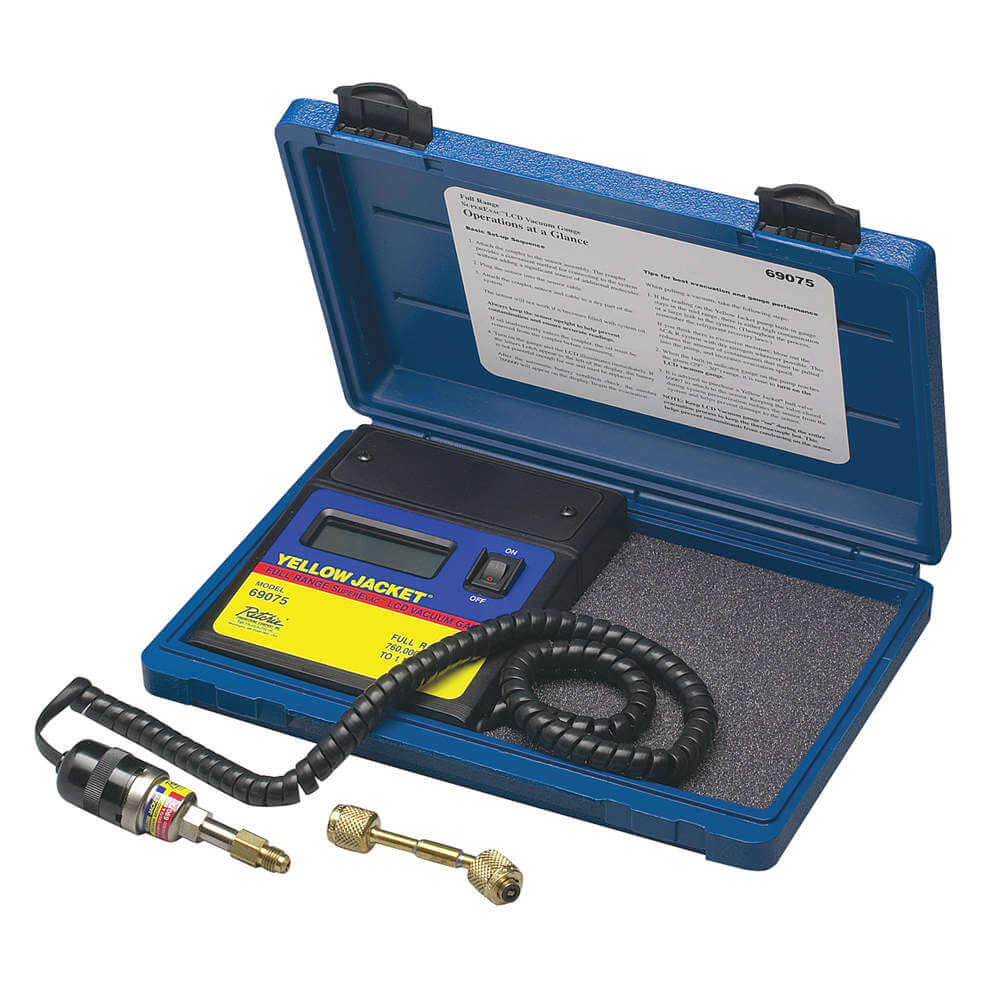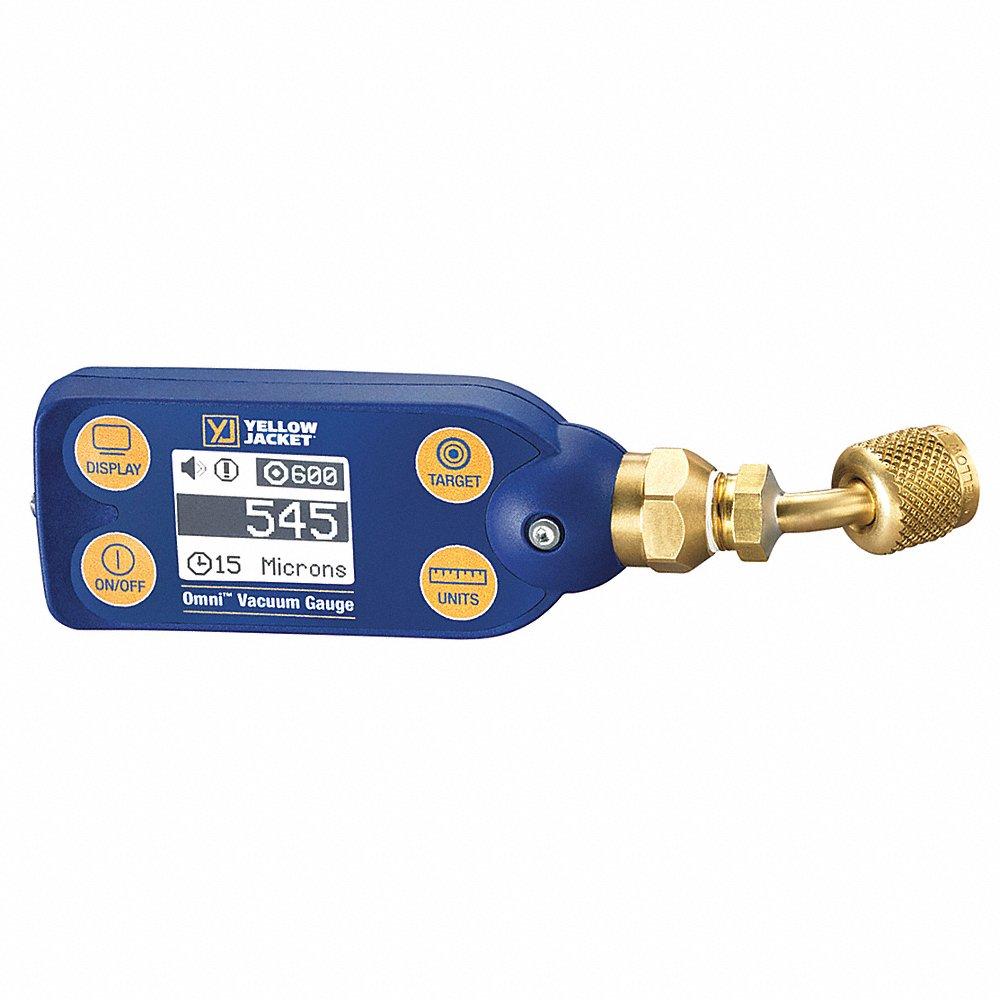Yellow Jacket 69086 is a fabric-wrapped hand-held vacuum gauge. The unit measures vacuum from the atmosphere to 10 microns (bar graph indication above 25000 microns) to ensure that your vacuum pump is clean and working properly. If the sensor becomes dirty, insert a new sensor into the gauge, perform a quick calibration and you'll be back on the job in minutes. This simple gauge indicates the removal of air and moisture from the system.
Working Mechanism:
- Connect the gauge to the system's dry part. If the sensor becomes clogged with system oil, it will no longer function.
- Switch on the gauge. At atmospheric pressure, the top row of the display will show a series of bars, and the bottom row of the display will indicate that the pressure is greater than the maximum numeric readout (e.g. >25000). The bars are only meant to show vacuum progress.
- At atmospheric pressure, the number of bars displayed will vary.
- The bar graph on the top row of the display will shrink as the pressure drops.
- When the pressure falls within the readout range, the numeric readout begins to change and the bar graph disappears.
- After about 20 minutes, the gauge will shut down. When you turn the gauge back on, it will take about 30 seconds for the sensor to warm up and display the true reading.
- The vacuum gauge displays readings in seven different international units.
- When the gauge is turned on, the readout units can be changed by pressing the UNITS button.
- The units displayed will change with each press of the UNITS key. If you go beyond the desired units, press the UNITS button again until the desired units appear.
- At the next power-up, the gauge will default to the unit's selection.
Features:
- A unique patented thermal conductivity sensor automatically compensates for temperature.
- The unit features a replaceable, cleanable, plug-in sensor that handles 450 psi positive pressure.
- It has a clear screen that displays 7 different vacuum units (microns, milliTorr, Torr, millimetres of mercury, millibar, kiloPascal & Pascal).
- The 12-inch coiled sensor cord extends to 24 inches for easy reach, connectivity and display readability.
- It has a back magnet for secure, upright positioning on any magnetised surface.
- The unit comes with a low battery indicator.
- Other features include an automatic shut-off after 20 minutes, calibration standards traceable to NIST, an operating temperature range of 32 to 122 degrees F (0 to 50 degrees C), approximately 25 hours of continuous battery life, and accuracy reading of +/-20%.
Frequently Asked Questions:
Q. How do you troubleshoot the unit?
A.
- Flashing "Low Battery!" message: The battery is low; replace it.
- There is no display: Check the battery polarity and ensure that the battery is making good contact with the spring terminals.
- Vacuum readings are incorrect: The sensor may be contaminated; clean or replace the sensor.
Q. What is the difference between gauge pressure and vacuum pressure?
A. Both gauge pressure and vacuum pressure are measured in relation to atmospheric pressure. The difference is that gauge pressure is higher than atmospheric pressure, whereas vacuum pressure is lower.
Q. How can I clean the sensor?
A.
- To clean the sensor, use isopropyl alcohol.
- Loosen the 1/4-inch pipe fitting to remove the stem adapter from the sensor body. Teflon thread tape is used to seal the pipe fitting.
- After disassembling, remove all Teflon thread tape from the stem adapter and sensor body.
- Fill the sensor with alcohol, cover it with your thumb, and shake it like a test tube.
- Pour out the solution, taking note of the amount of oil in the alcohol.
- If the sensor is very oily, the procedure may need to be repeated. Rinse the stem adapter in alcohol to clean it.
- The Schrader core depressor can be removed for cleaning, but it must be replaced. Make use of needle-nose pliers.
- Re-install the stem adapter on the sensor body after applying Teflon thread tape to the male threads. Thread sealants, whether liquid or paste, should not be used.
 Change Country
Change Country



